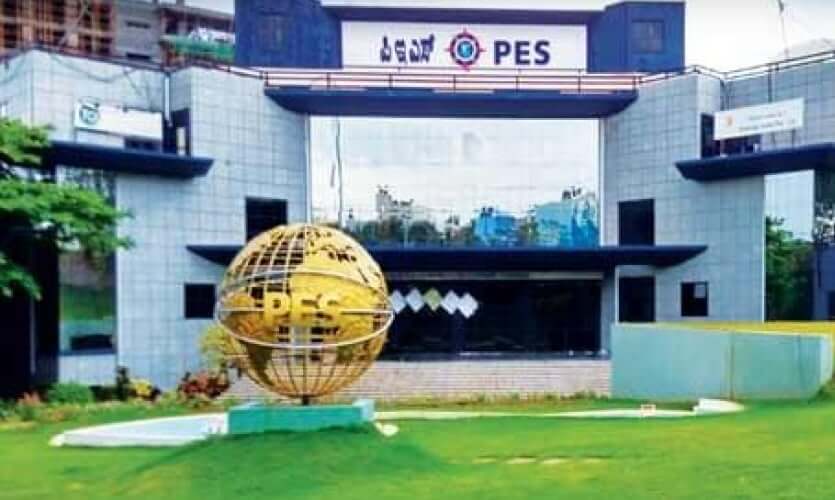OOPs in Java in Hindi
Learn Basic Fundamentals of OOPs in Java and Their Multi-Level Inheritance in Hindi

Ratings
Level
Learning hours

Learners
Skills you will learn
About this course
OOPs in Java provide a clear program structure by dividing it into objects and classes. It also promotes reusability, flexibility, and maintainability of code. Object-Oriented Programming is a programming paradigm based on the concept of objects. These objects are composed of data and methods that operate on that data. Java is a pure object-oriented language, which means that everything in Java is an object. This includes primitive data types, such as int and char, which are typically not considered objects in other programming languages. In Java, these primitive data types are objects created from wrapper classes. Let us find out more about OOPs in Java through this free course.
The course starts with introducing you to Object-Oriented Programming and understanding its importance and the role it plays in making programs more accessible. You will next go through the concept of inheritance and understand the place it holds in Object-Oriented Programming. You will further learn about multi-level inheritance and its various use cases. You will understand the Abstract class in detail and learn to implement it. Lastly, you will go through the concept of interface and its role in OOPs in Java. Enroll in this Free OOPs in Java in Hindi Course to get detailed knowledge on OOPs in Java in Hindi, which makes it stand out from other courses and help learners learn the concepts through the language they are comfortable with. Also, secure a certificate on completing the course successfully.
Explore more on software concepts and enhance your development skills with Great Learning’s Best Software Development Courses. Enroll in the Degree and PG programs that pique your interest and earn a certificate of course completion.
Course Outline
 UPGRADE
UPGRADE
Recommended university programs
What our learners enjoyed the most
Curriculum
64% of our learners found our curriculum helpful
Skill & tools
71% of learners found all the desired skills & tools
Frequently Asked Questions
Will I receive a certificate upon completing this free course?
Is this course free?
What is OOPs in Java?
OOP is object-oriented programming, which deals with creating objects that include data and methods. Objects are real-world entities such as computers, tables, pens, watches, etc. Object-oriented programming is a paradigm or a methodology to design a program with classes and objects. It is mainly used to simplify software development by providing concepts such as objects, classes, inheritance, polymorphism, abstraction, and encapsulation. The other common terms in OOPs include coupling, cohesion, association, aggregation, and composition.
How to learn OOPs in Hindi?
OPPs is a suite including concepts such as objects, classes, inheritance, polymorphism, abstraction, and encapsulation. You will have to learn the paradigm through practicing. You can apply these concepts to simplify your code and make it more readable, and it also reduces the complexity and the number of lines of code when implemented right. You can start with understanding these concepts and basic terminologies and then learn by practicing them.
What will you learn in OOPs in Java in Hindi course?
The OOPs in Java in Hindi course will start with introducing you to the subject. It will help you understand the subject by walking you through concepts like inheritance, explaining multi-level inheritance, abstract class and interference. The course is an hour and a half long but self-paced and hence will give you sufficient time to learn at your leisure.
OOPs in Java in Hindi
Java is an evergreen programming language, it is used to develop many applications such as mobile application, desktop graphical user interface application, web-based application, gaming, enterprise, scientific, big data technologies, business, distributed and cloud-based applications. Java is widely used due to its platform independency. You can write down your coding and run it on any platform.
Whenever you apply for a job as a Java developer role or mention Java as your strength in your resume or during the interview. The first thing every interviewer ask is whether you know the OOPS concept and they will ask you to explain its concept and what comes under OOPs.
What is OOPS in Java?
Object-Oriented Programming System is abbreviated as OOPS. Almost all modern programming languages follow the OOPS concept except for the C language. It is a programming style that is associated with the concepts of Class and Objects. There are also other concepts included in OOPS which are Inheritance, Polymorphism, Abstraction, Encapsulation, Association, Aggregation, Composition. The most common and frequently asked in interviews are in the concepts of Inheritance, Abstraction, Polymorphism and Encapsulation.
What is OOPS in Java for example?
Taking Human beings as one example:
They are categorized as Male and Female, every human being has body parts such as two hands, two eyes, two legs and many more. Most of the body parts are the same for both male and female. There are few body parts that differ in male and female, it helps us identify or differentiate between male and female. In body functions, both male and female can walk, talk, eat, hear, see and many more. The Female can give birth while the male cannot.
With the example taken above, Human Being is class. It is a class as it has common features such as eyes, ears, and mouth and body functions such as talking, eating, hearing. When we say we are human beings, we belong to the class “Human Beings”. Technically, a class is a blueprint or design of an entity that defines the core properties and functions.
Inheritance:
It is a way of inheriting a property or function from the parent class to the child class. In similar words, making use of a function or borrowing that already exists in the parent class.
For Example: With human beings as a class, under the class, there are body parts which are the objects such as legs, hands and eyes and body functions which are the functions such as walk, talk, see and eat. These are inherited by another two classes called male and female as it is common for both classes.
Object:
An object is an instance of a class that has physical existence.
Example: If we consider a two-wheeled vehicle or a four-wheeled vehicle as a class under these two classes, the objects will be a bike and a car respectively.
Another example with the one we have taken above when we divide human beings into two different classes as male and female. Under both the classes, a boy named Singh and a girl named Mehak will be the objects respectively. As both the persons have physical existence and so does the bike and car.
Abstraction :
Abstraction means displaying only things that are required and hiding the main details from the outside world. With the example taken above with human beings, both male and female can eat. The process of digestion is hidden from us and we don’t know how it happens.
Another example for easier understanding, take a mobile phone into consideration. We make phone calls, all we know is that we call a person and the receiver receives the phone call and the conversation goes on. The entire process of how the call gets connected and how it is sent and received is hidden from us.
Encapsulation :
Encapsulation is referred to as binding the properties and the function together.
For Example: We have hands which are property and the function is, our hands allow us to hold and feel things. Similarly, our legs help us to walk while our eyes help us to see. This is how encapsulation works in real life.
Also, in most programming languages, a private variable can be declared in the class. Such variables cannot be accessed outside the class hence a public function is defined in the class to allow accessibility of the variable outside the class using those functions. Such a method is called data hiding. Encapsulation also leads to data hiding.
Polymorphism:
Polymorphism is a method that allows us to do or define a function or an action that could be done in one or more ways.
Polymorphism can be attained by either changing the process of how it is done or by changing different parts that are in the function or action.
Polymorphism has two types, one is overriding and the other is overloading. An easier way to differentiate overriding with overloading is simple programming methods. We use “+” for addition to adding two numbers but when we overload it which is using the same “+” symbol to combine or add two sentences is called operator overloading. In the case of a class human being, if we use the hand instead of legs to walk then it is called overloading. The function of walking is the same but a different property or object is used to do so. In overriding, we can say a function or a method. For example, if a method for calculating an area of any shapes is created. The method name will be the same which is an area () but when the parameters which are the variables will differ according to the formulae and the area of the shape that we need to find.
In simpler words, when we need to find the area of square and rectangle. For square, we need only the length of a side and the formula will be side*side while for rectangle, we need both the height and the breadth to find the area and the formula will be length*breadth.
Taking a real-life example, if we take walking as a method. We have a normal direction that we walk towards but when we are asked to walk in a different direction, we change the method to do so which is turning around and walking.
When a process is changed on how it is done is called Overriding while changing a part of a process is called Overloading.
Why we use OOPS in Java?
The main objective of OOPs used in Java or most of the modern languages so that the object that is created can be re-used throughout the entire program and is manipulated to get the results.
What are the Features of OOPS in Java?
There are three main features in OOPS which are Encapsulation, Inheritance, and Polymorphism.
Types of Java Programs
There are six types of Java programs
-
Java Applet
-
Application
-
JAR File (Java Archive)
-
Servlet
-
Swing Application
-
EJB
Among these 6 types of Java, Java Applet and Servlet are the most common ones and taught in our java courses in detail.
In short, Java Applet is a small program that is written in Java and it runs in a web browser.
Application is a Standalone program type that can be run only on the computer.
JAR File is similar to the ZIP files where there are many java package files that are compressed into a single file.
Servlet is a java program that runs on a web server and it helps to display web pages and download and upload data.
Swing Application is used to build an application that is in need of a graphical user interface (GUI).
EJB runs on web servers and it is widely used for enterprise development. It is known as Enterprise Java Beans.
What are the Two Types of Java?
There are two types of Java.
-
Core Java
-
Advanced Java
Core Java :
-
It is the basic java programming technology concept.
-
The core java comprises Single Tier Architecture.
-
The Core Java programming interfaces are the basic foundation of the Java Platform which is the Standard Edition.
-
The Core Java comprises five packages which are util, lang, awt, io and net.
-
Most of the packages of Core Java start with “java. (The package name)” For example java.awt or java.io. This syntax is used when you want to use a package.
-
Core Java is meant as a “Stand-alone” java application.
Advanced Java:
-
Advanced Java is the next level and complex concept of Java Programming.
-
This is high-level Java programming that basically uses two-tier architecture where one is a client and the other is a server.
-
Advanced Java comprises very complex and advanced programming.
-
The advanced java programming covers the Swings, Socket Programming, AWT, Thread Concepts as well as the collection of objects and classes.
-
In Advanced Java, when you want to import a package then you always have to start with “javax. (package name)” For example javax.servlet
-
Advanced Java means java applications that run on servers. If it runs on a server that means it is a web application.
What are the Five Principles of OOP Principles?
-
The Single Responsibility Principle (SRP)
-
The Open-Closed Principle (OSP)
-
The Liskov Substitution Principle (LSP)
-
The Interface Segregation Principle (ISP)
-
The Dependency Inversion Principle (DIP)
It is also known as S.O.L.I.D principles.
1) Single Responsibility Principle(SRP)
When you create a class in your system in such a manner that when your system runs this class, it will have only one task to perform. There will be other classes to handle other tasks.
For example, there can be a class that can do only tax calculations and there can be another class that will handle only billing work.
It should be true for the whole system. There should be no other place where the same task is performed, it should be a class only. When a system is designed to be in such a manner it is called a single responsibility principle. Such a system will be very robust and it’s good for your system. When a class or module has a single responsibility to take care then it becomes easy to maintain and is understood easily and easy to implement.
Open-Closed Principle (OCP)
In this principle, it means that the class is open for extension and closed for modifications.
Taking an example to understand better, Bank accounts like regular savings, salary saving, corporate, etc. are for different kinds of customers. For each customer type, there are different kinds of rules and different interest rates. If the bank adds a new account type then it will violate the OCP principle. Classes will be open for change but a change of extension only if it does not modify the base classes or interfaces.
Liskov Substitution Principle(LSP)
If any module is using a base class then the reference to that base class can be replaced with a Derived class without affecting the functionality of the module.
For example: if the system wants to calculate discounts for enquiries. Enquiries are not actual customers, they are just leads. As they are just leads, there is no need to save them to the database for the time being. A new class is created as an enquiry which inherits from the class ‘Customer’. Some discounts are entered in the enquiries which are converted to actual customers. We override the “Add” method with an exception so no one can add an enquiry to the database.
Interface Segregation Principle (ISP)
By segregation of interfaces, it means we need to create more than one interface out of one big interface or base class. In such a way that each interface deals with one specific type of behavior of the system.
For Example, the toy interface is modified to include a walk () method to accommodate toy robots. Now all the toy implementation classes need to be modified include the walk () method even if the toy does not walk. If toy implementation class is always open for modifications leading to a fragile application which is difficult and expensive to maintain. This violates the ISP principle. Such violations affect the code readability and confuse the programmers.
Dependency Inversion Principle (DIP)
The core purpose of DIP is abstractions should not depend on details. Details should depend on abstractions.
For example: if there is a class that depends on another class to perform some action. The dependent class will require the instance object of the class on which it depends. You can provide the instance of dependency to the dependent class while the dependent class is being initialized.
Are Fortran and PHP an OOP?
OOPS is an important component for Fortran whereas PHP is a server-side scripting language. OOPS is added to PHP5 which helps it for the reusability of web applications.




















.jpg)
.jpg)
.png)





